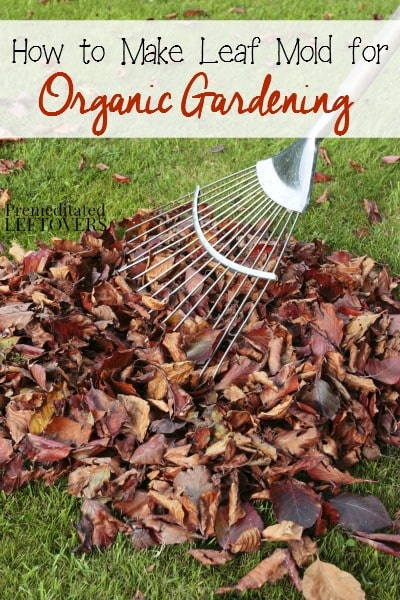If you have been gardening organically, you know how great a compost pile is and how much it comes in handy when giving your plants the best soil. Composting is a bacteria process that helps break down organic matter into nutrient rich soil that you can use. It is essentially a “heated” process.
How to Make Leaf Mold for Organic Gardening
Leaf mold is similar in that it is a composting-like process that creates solid you can use. However, there are some big differences. Leaf mold is what can be referred to as a “cold” process for composting because it doesn’t use bacteria to break down matter, but rather fungi.
If you are wondering why leaf mold is beneficial, it is because while it does not leave the nutrients you will find in a traditional compost, it does create an amazingly rich soil that helps your soil retain better moisture, (essentially through conditioning it) provides a great place for good soil dwelling bacteria as well as worms. It is kind of an additive you can add to your soil to make it work better for a bountiful harvest!
Here are some tips for making leaf mold if you are interested in giving it a go:
Know that it may take as long as 2-3 years for you to be able to harvest it, but it could take as little as 8-9 months depending on your climate. Wet areas tend to produce better fungi for the cold process.
Autumn is the perfect time (and really the only time) to start a leaf mold set. It does not matter what kinds of leaves you use, however, you should make sure you only have leaves in your set or it will slow down the process.
Rake your leaves into one pile. You will want to have a place for them that you can keep them contained so they can start the breakdown process. You can do this by building a simple structure from chicken wire and boards or you can even do it in a composting bin. If you are really pressed for money, leaf mold can even be created in black, plastic lawn and garden bags. Just make sure there is some circulation of air. If you are using plastic bags, just poke a few holes into them.
You can aid the process by running your lawnmower over your leaves. This will break them into smaller pieces so they have less to break down. You don’t want to completely pulverize them, though.
After you have decided where you will store them, make sure you wet the area. You do not want to completely soak it, but the moisture is important for the fungi growth process. After wetting, cover the leaves to create a damp environment. Occasionally, check the dampness level in your leaf mold area. Add more water if needed.
Just like with a traditional compost, you will want to turn the leaves over every couple of weeks to add air into the pile. This makes the process go a bit faster as well as spreads spores for new fungi growth.
Although you may be tempted, do not add any organic matter to your pile that is not leaves. Doing so will interrupt the fungi process and turn your leave mold pile into a regular compost pile.
Make sure to check your leaf mold every so often so you know if it is ready for harvest! When it is ready, you can just mix it in with your other soil. After you get it going the first year, you can just keep adding leaves to it each year after. Just know that doing so will leave you with varying stages of decomposition.
Do you use leaf mold in your organic gardening?


Belinda says
Thank you!
I guess I never thought that “compost” and “leaf mold” are different —
How would I use these differently?
Or would I use them in the same way?
~B